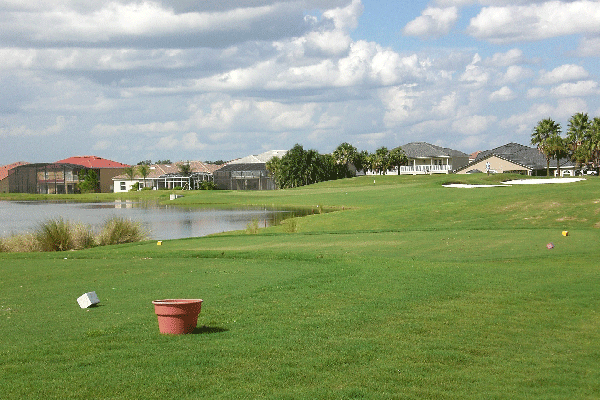Preamble: "Lake Friendly" lawn care is very similar to "regular" common sense lawn care. The difference is two-fold; first, the presence of an obvious target, which is your nearby lake. Secondly, a heightened sensitivity by lake property owners of the vulnerability of their site.
That said, here are good practices that will help prevent lake pollution from chemical run-off.
- Encourage water infiltration, not runoff with these seven practices.
- Soil modification
- Core aeration
- Reduce slope
- Delayed irrigation starts
- Reduce thatch
- Conduct an irrigation audit
- Use a broom or blower to move fertilizer particles back to the lawn and off the sidewalk, driveway or street
- Use a lighter application of slow-release Nitrogen
- Use turf math to apply lighter amounts than called for on the fertilizer bag label. Begin by dividing the amount of nitrogen you want to apply (in pounds) by the % nitrogen in the product. This gives you the amount of product to use per 1,000 sq. ft.
- For example, you're using a fertilizer containing 28% nitrogen and you want to apply 0.5 lbs. of nitrogen per 1,000 sq.ft.
- Divide 0.5 lb N by 0.28. This gives you 1.78 lbs of product to be applied for every 1,000 sq. ft. of lawn
- Don't apply phosphorous unless a need has been established through a soil test.
- Rhizomatous species of turf have more capacity to prevent pollution
- More thatch and mat exists to retain applied nutrients
- Thin turf stands allow more runoff
- Overseed thin grass stands.
- Don't overfertilize or underfertilize. Use the holiday schedule for fertilizer applications for both warm and cool season turf species.
- Warm season grasses (Buffalograss & Zoysiagrass) - Memorial Day, 4th of July
- Cool season grasses (Kentucky Bluegrass, Perennial Ryegrass & Turf Type Tall Fescue) - Arbor Day, Memorial Day, Labor Day, Veterans Day

